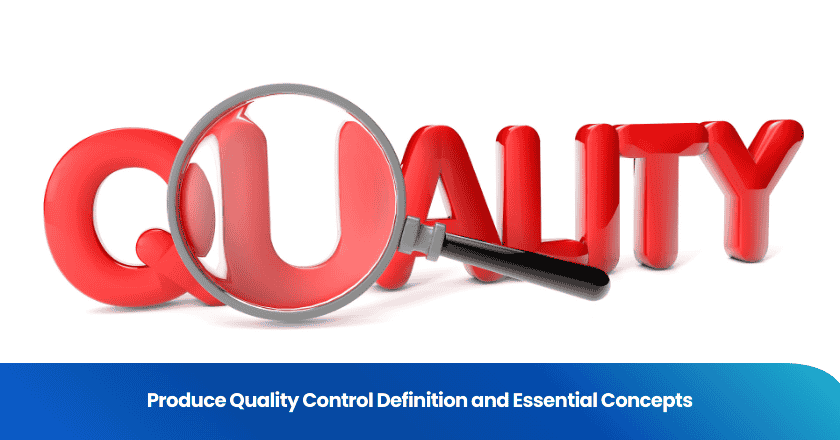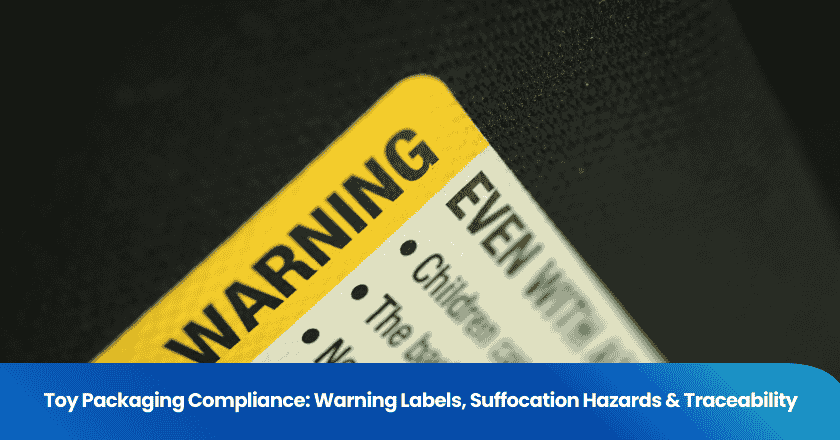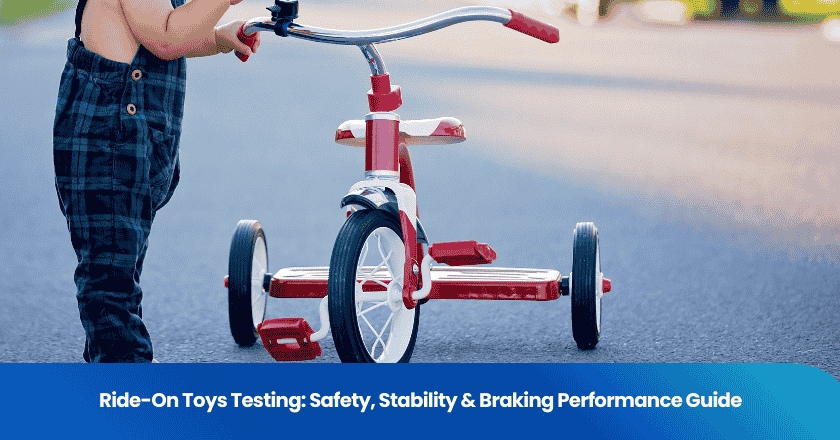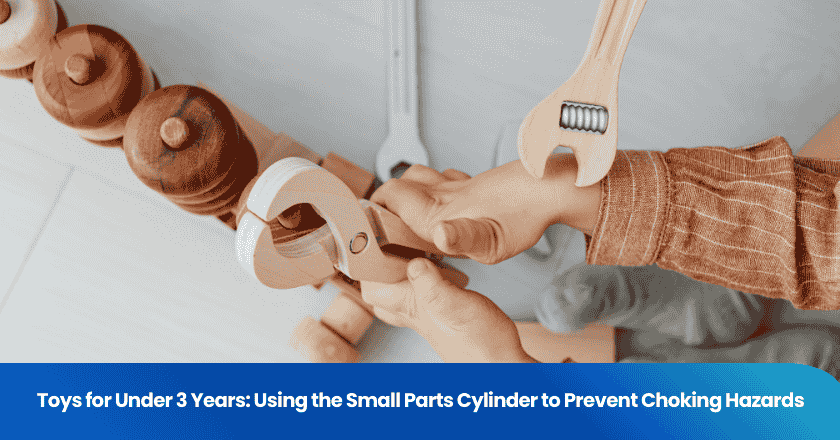
Produce quality control means you monitor and manage the condition of fruits and vegetables from harvest to sale. You make sure every product meets strict safety and quality standards. When you apply produce quality control, you protect consumer trust and deliver fresh, safe produce. Poor quality control leads to significant losses, such as 34.64% of carrots being downgraded for not meeting cosmetic standards. You help reduce waste and ensure only top-quality produce reaches customers.
Key Takeaways
- Produce quality control ensures fruits and vegetables meet safety and quality standards from harvest to sale.
- Implementing Good Agricultural Practices (GAP) and Hazard Analysis and Critical Control Points (HACCP) helps maintain produce integrity and safety.
- Regular inspections and testing are crucial for identifying defects and preventing foodborne illnesses.
- Effective quality control builds customer trust, enhances satisfaction, and reduces waste in the supply chain.
- Documenting every step of the quality control process supports compliance and continuous improvement.
Produce Quality Control Overview
Definition
You oversee produce quality control by applying a set of systematic procedures that guarantee fruits and vegetables meet established standards from farm to consumer. You rely on recognized frameworks such as Good Agricultural Practices (GAP) and Hazard Analysis and Critical Control Points (HACCP). GAP focuses on minimizing risks in handling and maintaining food safety, while HACCP provides a structured approach to identifying and managing hazards. These systems help you maintain the integrity, safety, and freshness of produce throughout the supply chain.
Quality control in produce involves monitoring every stage, from raw material verification to final inspection. You use defined standards to assess appearance, texture, and safety. International regulations, including those from organizations like the World Health Organization, shape your procedures and ensure you follow best practices for product identity and purity.
You implement quality control processes that include sampling, batch validation, and continuous improvement. You document each step to maintain transparency and accountability. By following these standards, you ensure that only produce meeting strict requirements reaches the market.
Key components of produce quality control:
- Defining quality standards
- Verifying raw material quality
- Conducting sampling and batch validation
- Performing in-process quality checks
- Reporting nonconformance and taking corrective actions
- Keeping detailed records
- Inspecting final products
- Pursuing continuous improvement
Objectives
Your main objectives in produce quality control focus on protecting consumers and maintaining product integrity. You aim to prevent foodborne illnesses and contamination by implementing rigorous control measures. You establish and adhere to quality standards that define what acceptable produce looks and feels like. You develop quality assurance programs, including standard operating procedures and staff training, to ensure consistency in production.
| Objective | Description |
|---|---|
| Ensuring Food Safety | Implementing measures to prevent foodborne illnesses and contamination. |
| Maintaining Quality Standards | Establishing and adhering to defined quality benchmarks for produce. |
| Effective Quality Assurance | Developing SOPs and training to ensure consistent quality in production. |
You also respond to increasing regulatory demands and consumer expectations for transparency. You address supply chain complexities by strengthening control measures. Setting clear objectives supports continuous improvement in food safety and quality. You reduce risks, enhance product quality, and align with regulatory standards.
Importance of Quality Control
Quality control plays a vital role in every step of produce handling and distribution. You protect public health, build customer trust, and drive process improvement by focusing on quality at each stage. When you apply strong control measures, you reduce risks and support continuous improvement in your operations.
Food Safety
You face significant risks from foodborne illnesses when quality control fails. Each year, about 1 in 6 Americans become sick from contaminated food. You can prevent many of these cases by using effective quality assurance systems. Good Agricultural Practices (GAPs) and Good Handling Practices (GHPs) help you lower microbial hazards and keep produce safe. Inspection and testing allow you to catch problems early and stop contaminated products from reaching consumers.
| Pathogen | Type | Symptoms |
|---|---|---|
| Salmonella spp. | Bacteria | Diarrhea, fever, and stomach cramps |
| Clostridium botulinum | Bacteria | Death, toxins attack nervous system |
| Staphylococcus aureus | Bacteria | Infection of internal organs |
| Yersinia enterocolitica | Bacteria | Diarrhea, fever, and stomach cramps — rare in produce |
| Listeria monocytogenes | Bacteria | Headache, stiff neck, confusion, and muscle aches |
| Vibrio spp. | Bacteria | Skin infection — rare in produce |
| Escherichia coli O157:H7 | Bacteria | Diarrhea, vomiting, cramps, and fever |
| Clostridium perfringens | Bacteria | Diarrhea, vomiting, and cramps |
| Bacillus cereus | Bacteria | Diarrhea, vomiting and cramps — resistant to cooking |
| Campylobacter spp. | Bacteria | Diarrhea, vomiting, and cramps |
By focusing on quality control, you reduce the risk of outbreaks and protect your customers.
Customer Satisfaction
You build customer loyalty by delivering consistent quality. Enhanced quality control processes lead to higher satisfaction ratings. When you maintain high standards through regular inspection and continuous improvement, you earn customer trust. Satisfied customers return and recommend your products to others. If you fail in quality control, you risk recalls, financial losses, and damage to your reputation. Retailers often struggle to recover from such incidents, especially when consumer trust drops. You can support customer confidence by providing clear information and quick responses during any quality issue.
- Consistent quality encourages repeat business.
- Effective quality control increases customer retention and referrals.
- Quality improvement efforts strengthen your reputation.
Reducing Waste
You save money and resources by reducing waste through quality control. Early inspection and process improvement help you catch defects before they become costly problems. You align production with demand, avoiding overproduction and unnecessary processing. Quality control also supports continuous improvement, leading to long-term savings.
| Type of Waste | Description |
|---|---|
| Defects | Mistakes or flaws in products that lead to rework or disposal. Inspection helps catch these. |
| Overproduction | Producing more than needed, causing excess inventory and waste. Control keeps output aligned. |
| Overprocessing | Unnecessary steps that do not add value. Quality improvement eliminates these steps. |
You can further reduce waste by monitoring ingredient freshness and removing spoiled produce quickly. These actions lower costs and support a more sustainable operation.
Key Concepts in Quality Control
Understanding the essential concepts in quality control helps you maintain high standards and deliver safe, reliable produce. Each step in the process—from setting standards to documenting results—ensures that your products meet expectations and comply with regulations.
Standards
You start by establishing clear standards for your produce. These standards define what quality means for each product, including appearance, texture, and safety. Organizations such as the American Society for Testing and Materials (ASTM) and the International Organization for Standardization (ISO) play a major role in developing these benchmarks. ASTM has published over 12,000 standards, many of which guide quality control in produce. ISO standards help you manage quality across different industries, ensuring consistency and reliability. The AICPA’s Statements of Quality Management Standards (SQMS) also support a risk-based approach to quality management.
Key organizations setting standards:
- ASTM: Develops voluntary standards for produce quality control.
- ISO: Establishes international quality management standards.
- AICPA: Provides guidance for quality management through SQMS.
By following these standards, you create a foundation for effective quality control and continuous improvement.
Inspection
Inspection is a core part of your quality control process. You use different inspection techniques at various stages to ensure that your produce meets established standards. Each technique serves a specific purpose, from checking raw materials to evaluating finished products.
| Inspection Technique | Description |
|---|---|
| Pre-Production Inspection | Conducted before manufacturing to assess the quality of raw materials and components. |
| In-Process Inspection | Ongoing assessments during manufacturing to identify defects and ensure compliance with standards. |
| Final Quality Inspection | Comprehensive evaluations of finished products to ensure they meet specified requirements before delivery. |
You determine the frequency of inspections based on risk assessments. High-risk facilities require bi-weekly or more frequent inspections, while moderate-risk sites may need monthly checks. Low-risk operations can often schedule quarterly inspections. Factors such as facility type, location, and past issues influence your inspection schedule. Routine inspections help you catch problems early and maintain high quality.
Testing
Testing allows you to detect contaminants and verify that your produce meets safety and quality requirements. You use a range of laboratory techniques to analyze samples and identify potential hazards.
| Technique | Description |
|---|---|
| Spectroscopy | Identifies unknown substances in a sample using FTIR or Raman methods. |
| Inductively Coupled Plasma (ICP) | Detects trace metals with high sensitivity for multi-elemental analysis. |
| Nuclear Magnetic Resonance (NMR) | Provides detailed information about molecular structure, effective for organic contaminants. |
| Optical Microscopy | Examines particles at a microscopic level, revealing shape and size. |
| Scanning Electron Microscopy (SEM) | Identifies elemental composition, distinguishing organic and inorganic materials. |
You select the most effective testing methods based on the type of produce and the risks involved. Accurate testing supports your quality assurance efforts and helps you meet regulatory requirements.
Sampling
Sampling is essential for assessing the quality of large batches without inspecting every item. You select representative samples to evaluate, which helps you identify defects and improve operational efficiency. Acceptance sampling enables you to make statistically valid decisions about product quality. This approach serves as a critical checkpoint between production and distribution, balancing risk, efficiency, and cost.
Sampling benefits:
- Ensures representative quality control results.
- Identifies defects early.
- Improves efficiency and reduces unnecessary inspections.
You rely on sampling to maintain high quality standards while managing resources effectively.
Defect Identification
You must identify and classify defects to maintain quality. Defects can be biological, physical, or chemical. Each type affects your product differently and requires specific control measures.
| Type of Defect | Examples | Impact on Quality |
|---|---|---|
| Biological Defects | Moulds in fruits, bacteria in dairy, insect contamination | Significant health risks |
| Physical Defects | Foreign objects, damaged packaging, bruising, excessive softening | Market rejection |
| Chemical Defects | Unacceptable levels of pesticides, harmful chemical additives | Requires effective testing protocols |
You use inspection and testing to detect these defects. Early identification allows you to take corrective actions and prevent poor-quality produce from reaching customers.
Corrective Actions
When you find that produce does not meet quality control standards, you must act quickly. Corrective actions follow a structured process to resolve issues and prevent recurrence.
| Step | Description |
|---|---|
| Problem Identification and Documentation | Detect and document the quality issue in detail, including inspection reports and affected product samples. |
| SCAR Issuance | Formally issue the SCAR to the supplier with all relevant details and required actions. |
| Supplier Acknowledgement and Containment | Supplier confirms receipt and implements immediate containment actions. |
| Root Cause Analysis (RCA) by Supplier | Supplier investigates to identify the true underlying cause of the non-conformance. |
| Corrective and Preventive Action (CAPA) Plan Development | Supplier develops a CAPA plan outlining corrective and preventive actions. |
| Implementation of Corrective Actions | Supplier implements the agreed-upon actions and provides updates. |
| Verification of Effectiveness | Organization verifies the effectiveness of the actions through inspections or audits. |
| SCAR Closure | If effective, the SCAR is formally closed, maintaining records for future reference. |
You document each step, ensuring transparency and accountability. This process supports continuous improvement and helps you maintain high quality.
Documentation
Documentation is the backbone of your quality control system. You must control documents according to regulatory standards, such as 21 CFR 820.40. You approve documents before release and prevent the use of obsolete versions. Any changes go through a defined process, and you implement data integrity controls for electronic records.
Key documentation practices:
- Review documents before audits.
- Verify that procedures and records are current during on-site audits.
- Consolidate observations and review findings after audits.
Proper documentation ensures you can trace every action and decision. This practice supports compliance, quality assurance, and ongoing improvement in your operations.
Methods for Produce Quality Control
You rely on several proven methods to maintain high standards in produce quality control. Each method supports your efforts in monitoring, assurance, and continuous improvement. By combining these approaches, you create a robust quality management system that ensures safe, appealing, and compliant produce.
Visual Inspection
Visual inspection remains one of the most direct ways to assess produce quality. You examine fruits and vegetables for color, size, shape, and visible defects. This method allows you to quickly identify issues such as bruising, discoloration, or contamination. You use visual inspection at multiple points in the supply chain, from harvest to packaging. Regular monitoring through inspection helps you prevent defective products from reaching customers and supports manufacturing quality.
Visual inspection offers immediate feedback, making it a valuable tool for quality assurance and defect prevention.
Sensory Evaluation
You use sensory evaluation to interpret the properties of produce through your senses—vision, smell, taste, touch, and even hearing. This method plays a crucial role in quality assessment, especially for products like wine, where aroma complexity and taste balance determine value. Sensory analysis also helps you differentiate products based on raw materials and production methods. By applying sensory evaluation, you enhance your ability to detect subtle changes in quality and support continuous monitoring.
Laboratory Testing
Laboratory testing provides scientific assurance of produce safety and quality. You use advanced techniques to detect contaminants, pesticide residues, and chemical composition. Common methods for pesticide residue detection include:
- Chromatography
- Spectral analysis
- Immunoassays
- Biosensor technologies
You also perform analytical methods development, chemical analyses, and quick turnaround tests for flavor components and volatile organic compounds. Laboratory testing strengthens your quality control by providing objective data for monitoring and improvement.
Grading Systems
Grading systems classify produce based on criteria such as size, color, ripeness, and defects. You use these systems to sort fruits and vegetables into categories that match market standards. Image processing and machine vision technologies now allow you to categorize produce with high accuracy before market entry. These systems ensure correct pricing and help you meet international quality requirements. Recent advances in artificial intelligence have improved defect detection rates, making grading more efficient and reliable.
By integrating grading systems into your quality management system, you support compliance, customer satisfaction, and resource optimization.
| Method | Main Purpose | Key Benefit |
|---|---|---|
| Visual Inspection | Detect visible defects and irregularities | Immediate feedback |
| Sensory Evaluation | Assess quality through senses | Enhanced product differentiation |
| Laboratory Testing | Identify contaminants and chemical composition | Objective assurance |
| Grading Systems | Classify produce for market access | Accurate sorting and pricing |
You play a key role in produce quality control by ensuring fruits and vegetables meet strict standards for safety, freshness, and appearance. By applying essential concepts like inspection, testing, and documentation, you protect consumers and support efficient operations. Quality control knowledge benefits both small and large-scale farms in many ways:
| Application Area | Benefits | Technologies Used |
|---|---|---|
| Irrigation Management | Optimizes water use, reduces waste | Flow meters, control valves |
| Crop Yield Optimization | Improves soil and climate monitoring | Environmental analyzers, sensors |
| Food Processing | Maintains safety and quality during processing | Temperature and humidity sensors |
| Environmental Compliance | Supports sustainability and regulatory standards | IoT-based monitoring systems |
To deepen your understanding, consider these best practices:
- Inspect raw ingredients and monitor processing variables.
- Define clear quality expectations and metrics.
- Conduct sensory evaluations and ensure proper packaging.
By recognizing the value of quality control, you help deliver safe, high-quality produce and drive continuous improvement in your operations.
FAQ
What is the role of manufacturing in produce quality control?
You use manufacturing to transform raw produce into finished products. Manufacturing involves sorting, cleaning, and packaging. You monitor each manufacturing step to ensure quality. Manufacturing processes help you maintain safety and consistency. You rely on manufacturing standards to meet regulatory requirements and customer expectations.
How does manufacturing affect food safety in produce?
Manufacturing plays a key role in food safety. You control hazards during manufacturing by following strict protocols. Manufacturing equipment must stay clean. You test products during manufacturing to detect contaminants. Manufacturing staff receive training to handle produce safely. You document every manufacturing step for traceability.
Why do you need documentation in manufacturing quality control?
You need documentation to track every manufacturing process. Documentation helps you identify issues in manufacturing. You use records to prove compliance with regulations. Manufacturing documentation supports audits. You review manufacturing logs to improve future manufacturing practices. Accurate documentation ensures you meet manufacturing quality standards.
What are common manufacturing defects in produce?
You may find defects during manufacturing, such as bruising, discoloration, or contamination. Manufacturing can introduce foreign objects. You monitor manufacturing lines for equipment malfunctions. You inspect products after manufacturing to catch defects. Manufacturing teams address defects quickly to prevent distribution of poor-quality produce.
How do you improve manufacturing quality control for produce?
You improve manufacturing quality control by training staff, updating equipment, and refining processes. You set clear manufacturing standards. You use inspections and testing during manufacturing. You analyze manufacturing data to find trends. You implement corrective actions in manufacturing to prevent recurring issues. Manufacturing improvements boost product quality.
Grow your business with TradeAider Service
Click the button below to directly enter the TradeAider Service System. The simple steps from booking and payment to receiving reports are easy to operate.




